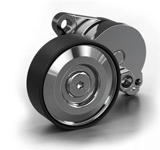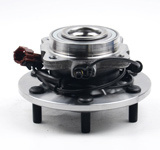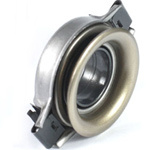Signs That Your Timing Belt Tensioner Needs Replacement: A Comprehensive Guide
Release time:
Jan 03,2025
Signs That Your Timing Belt Tensioner Needs Replacement: A Comprehensive Guide
Table of Contents
- Introduction to Timing Belt Tensioner
- Understanding the Timing Belt Tensioner
- Importance of the Timing Belt Tensioner in Your Vehicle
- Common Signs of Timing Belt Tensioner Failure
- Unusual Noises from the Engine
- Engine Performance Issues
- Visible Signs of Timing Belt Wear
- Dashboard Warning Lights
- Consequences of Neglecting Timing Belt Tensioner Maintenance
- How to Check Your Timing Belt Tensioner
- When to Replace Your Timing Belt Tensioner
- Frequently Asked Questions
- Conclusion
Introduction to Timing Belt Tensioner
The timing belt tensioner plays an essential role in the proper functioning of your vehicle's engine. This component ensures that the timing belt maintains the correct tension, allowing the engine's components to work in harmony. In this article, we will explore the signs indicating that your timing belt tensioner may be in need of replacement. Recognizing these signs early can save you from costly repairs and prevent significant engine damage.
Understanding the Timing Belt Tensioner
The timing belt is a critical part of your engine's operation, connecting the crankshaft to the camshaft. The timing belt tensioner keeps this belt taut, ensuring optimal performance. If the tensioner fails, it can lead to a loose or overly tight timing belt, causing various engine issues.
Timing belt tensioners are designed to last a significant amount of time, but they are not immune to wear and tear. Factors such as temperature fluctuations, engine vibration, and contamination can affect their lifespan.
Importance of the Timing Belt Tensioner in Your Vehicle
The timing belt tensioner is crucial for maintaining the synchronization of your engine’s components. If it fails, it can lead to:
- **Engine Misalignment**: A loose timing belt can cause misalignment of the engine's components, resulting in poor performance.
- **Increased Wear**: A faulty tensioner may lead to uneven wear on the timing belt, reducing its lifespan and effectiveness.
- **Potential Engine Damage**: In severe cases, a failing tensioner can lead to catastrophic engine damage if the timing belt breaks or slips.
Understanding the importance of the timing belt tensioner emphasizes the need for regular inspections and maintenance.
Common Signs of Timing Belt Tensioner Failure
Recognizing the signs of a failing timing belt tensioner is crucial for any vehicle owner. The following are the most common indicators:
Unusual Noises from the Engine
One of the first signs of a failing timing belt tensioner is **unusual noises** coming from the engine. You may hear a rattling or grinding noise, which often indicates that the tensioner is not properly maintaining the tension on the timing belt. If you hear any strange noises, it is important to investigate immediately as this could lead to more severe problems.
Engine Performance Issues
If your vehicle begins to exhibit **performance problems**, such as stalling, difficulty starting, or reduced acceleration, it could be a sign of a failing timing belt tensioner. The tensioner directly affects the synchronization of the engine's moving parts, and any issues can lead to a drop in performance.
Visible Signs of Timing Belt Wear
Inspecting your timing belt for **visible signs of wear** is essential. Look for cracks, fraying, or glazing on the belt surface. If the tensioner is not functioning correctly, the belt may wear unevenly or excessively, leading to its eventual failure. Regular inspections can help you catch these signs early.
Dashboard Warning Lights
Many modern vehicles are equipped with onboard diagnostic systems that monitor various engine components. If the timing belt tensioner is failing, you may notice a warning light on your dashboard. Pay attention to these indicators, as they can help you identify issues before they become serious.
Consequences of Neglecting Timing Belt Tensioner Maintenance
Ignoring the signs of a failing timing belt tensioner can lead to severe consequences. Some potential outcomes include:
- **Complete Timing Belt Failure**: If a tensioner fails, it may cause the timing belt to snap, leading to extensive engine damage.
- **Increased Repair Costs**: The longer you wait to address timing belt tensioner issues, the more expensive repairs can become.
- **Reduced Vehicle Reliability**: A failing tensioner can compromise your vehicle's reliability, leaving you stranded at the worst possible times.
Regular maintenance and timely replacements can help you avoid these potential pitfalls.
How to Check Your Timing Belt Tensioner
Checking your timing belt tensioner involves a few simple steps:
1. **Visual Inspection**: Start with a visual inspection of the timing belt and tensioner. Look for any signs of wear, fraying, or damage.
2. **Check the Tension**: Use a tension gauge to measure the tension of the timing belt. A properly functioning tensioner should keep the belt taut.
3. **Listen for Noises**: As you run the engine, listen for any unusual sounds that may indicate tensioner problems.
4. **Consult a Professional**: If you notice any signs of failure, consult a qualified mechanic for a thorough inspection.
Regular inspections can help you stay ahead of potential issues.
When to Replace Your Timing Belt Tensioner
Knowing when to replace your timing belt tensioner can prevent serious engine problems. Here are some guidelines:
- **Manufacturer Recommendations**: Always refer to your vehicle's owner manual for manufacturer-recommended replacement intervals.
- **Signs of Wear**: If you notice any of the signs listed above, it may be time to replace the tensioner.
- **During Timing Belt Replacement**: It is often advisable to replace the tensioner when replacing the timing belt to ensure optimal performance.
Replacing the tensioner at the right time can save you from more extensive repairs in the future.
Frequently Asked Questions
What is the function of a timing belt tensioner?
The timing belt tensioner maintains the correct tension on the timing belt, ensuring that the engine's components work in sync.
How often should I check my timing belt tensioner?
It is recommended to check your timing belt tensioner during routine maintenance and whenever you perform engine inspections.
What can happen if I ignore a failing tensioner?
Ignoring a failing tensioner can lead to timing belt failure, which may cause extensive engine damage and costly repairs.
Can I replace the timing belt tensioner myself?
While it is possible to replace the tensioner yourself, it is advisable to consult a professional mechanic if you are not experienced with engine repairs.
How much does it cost to replace a timing belt tensioner?
The cost of replacing a timing belt tensioner can vary depending on the vehicle make and model, but it typically ranges from $150 to $400, including parts and labor.
Conclusion
Recognizing the signs that your timing belt tensioner needs replacement is vital for maintaining your vehicle's performance and longevity. Unusual noises, engine performance issues, visible signs of wear, and dashboard warning lights are all critical indicators of potential tensioner failure. Regular maintenance and timely replacements can help you avoid severe engine damage and costly repairs. By staying vigilant and proactive, you can ensure that your vehicle remains in optimal condition and runs smoothly for years to come.






















